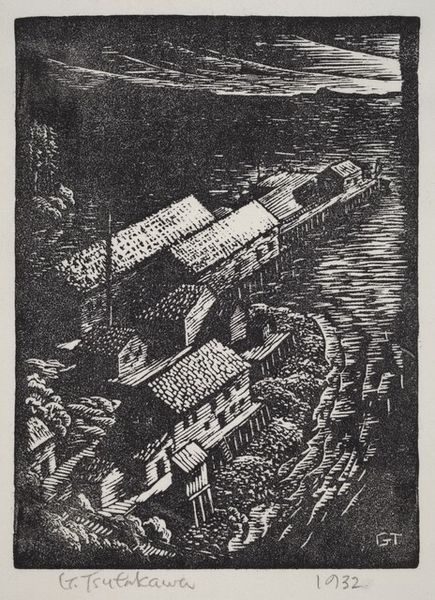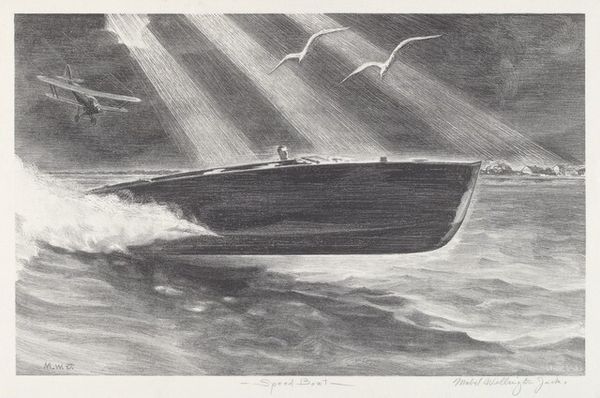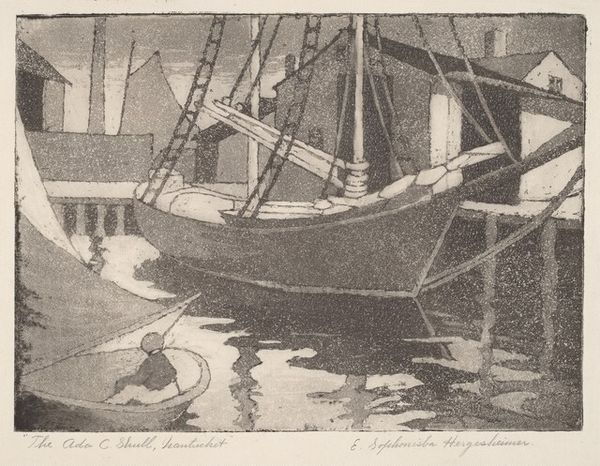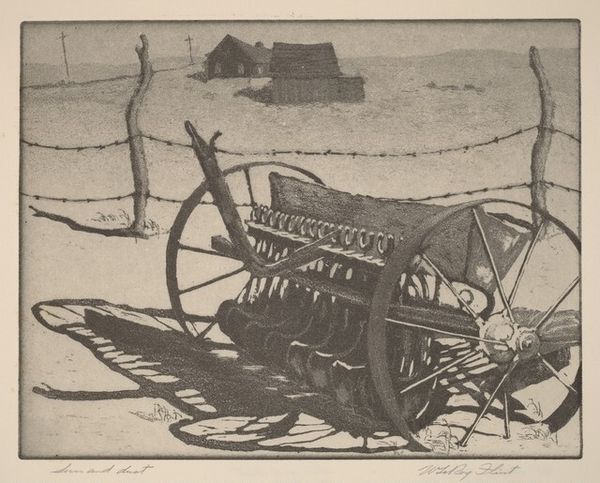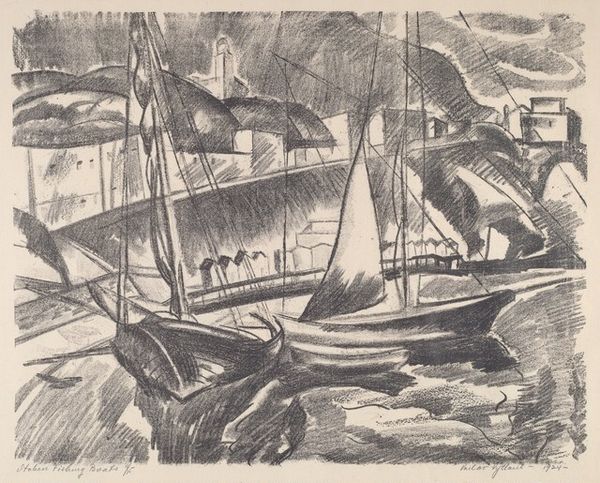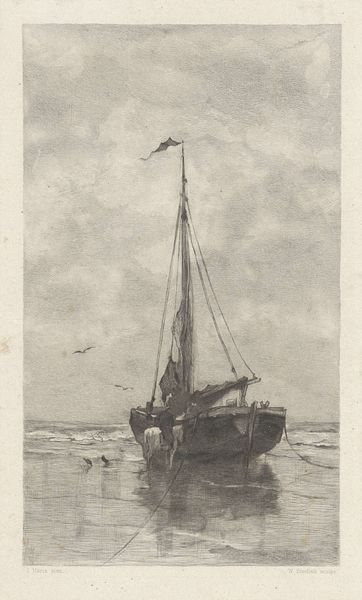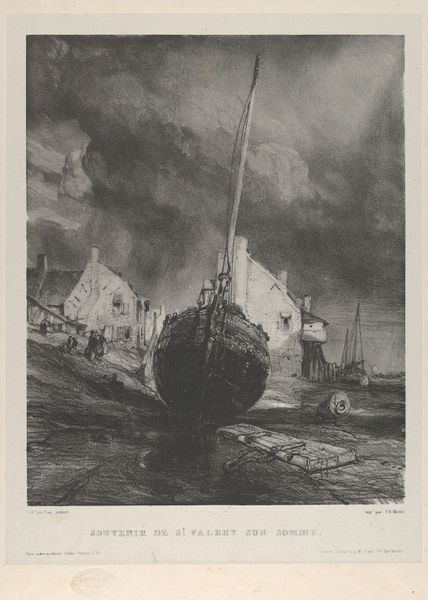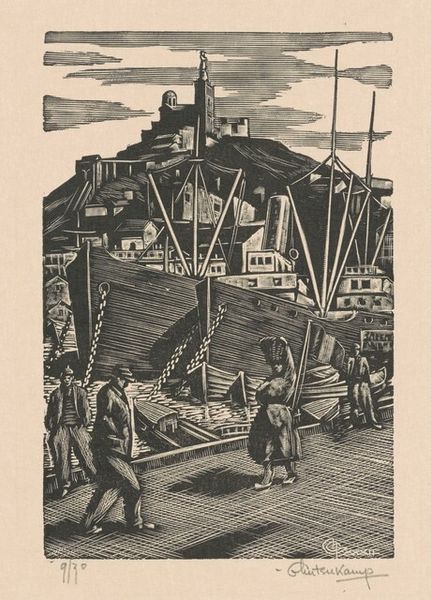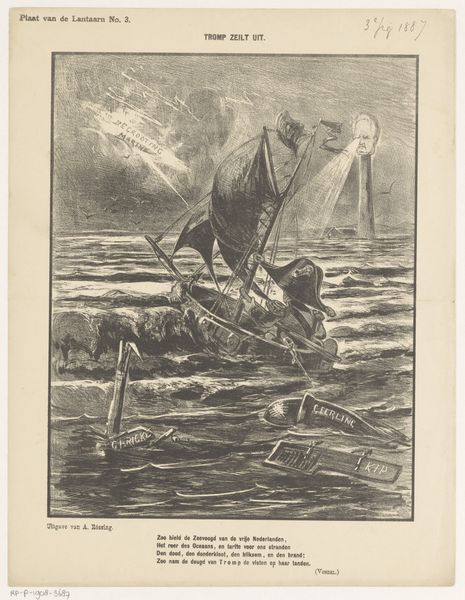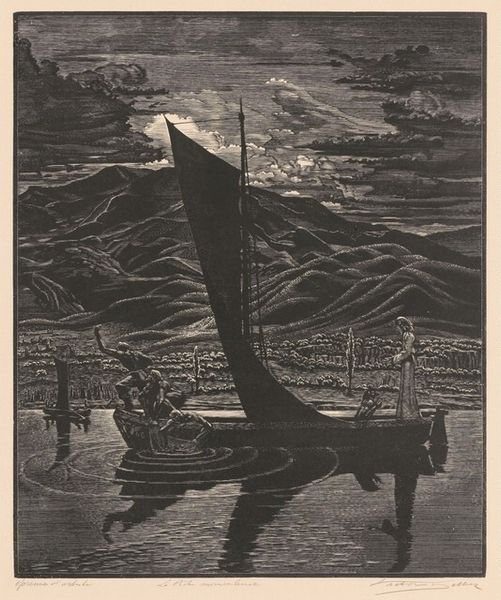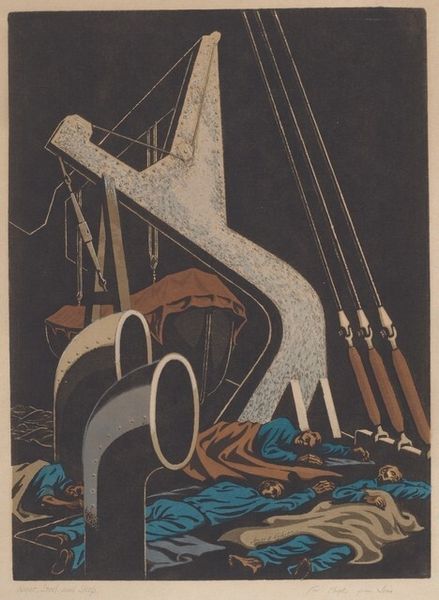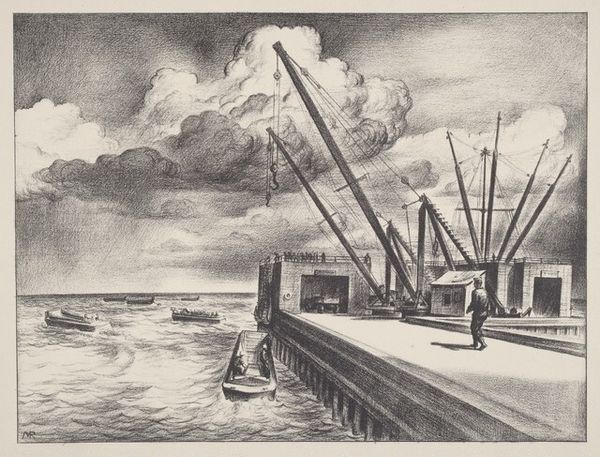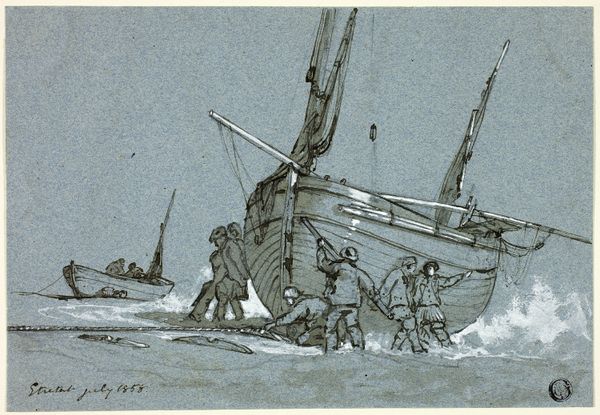
print, etching
#
narrative-art
# print
#
etching
#
cityscape
#
realism
#
monochrome
Dimensions: plate: 278 x 224 mm sheet: 365 x 309 mm
Copyright: National Gallery of Art: CC0 1.0
William Sharp, in the late 18th or early 19th century, made this print using a plate, and some paper of course. I love the way the image is built up from layers of etched marks, those tiny lines and dots. It really emphasizes that artmaking is a process, a conversation, mark by mark. Look closely at the water and how Sharp builds these undulating waves with a complex network of lines that give it depth and movement. It's not just water, it's a kind of living energy. And the texture, it's all there in these tiny scratches and dots. The darks are deep and velvety, and the lights shimmer as if from the surface of the water. I’m drawn to the dark areas, it emphasizes the mood and gives the image an emotional resonance, there’s something ominous about this boat leaning. If you consider the prints of Whistler, especially his Thames set, I feel Sharp is continuing a kind of artistic dialogue, taking us further down the river of art history.
Comments
No comments
Be the first to comment and join the conversation on the ultimate creative platform.
